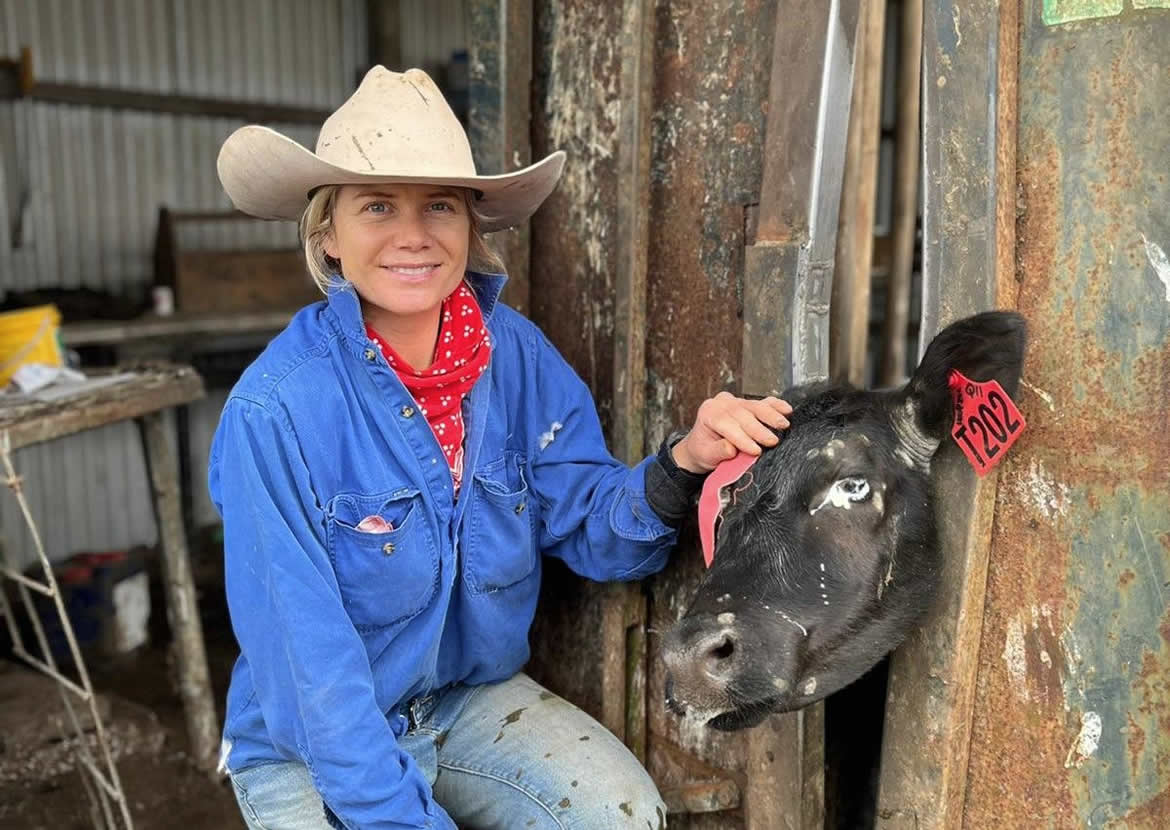Dr Elle Moyle answers your animal health questions.
Welcome to Greenham’s first animal health column where we ask a vet about animal health issues and seasonal challenges facing your herd.
Dr Moyle is a vet, commercial sheep & beef farmer, and Livestock Manager at seedstock beef cattle business, Pathfinder Angus, based near Penshurst, Victoria.
Elle grew up on sheep and beef properties all over South Australia, New South Wales, and Victoria. After graduating from Charles Sturt University with a Bachelor of Veterinary Science/Veterinary Biology in 2014, she worked in mixed practice around South Australia and north Queensland. Returning to Victoria in 2016, she worked with Agriculture Victoria as a District Veterinary Officer where her role took her across the state investigating a wide range of livestock disease, emergency disease response and animal health and welfare issues. Elle is also a member of the Australian & New Zealand College of Veterinary Scientists.
Managing pinkeye in your herd
Infectious bovine kerato-conjunctivitis, commonly known as pinkeye, has been wreaking havoc across southern Australian cattle herds for the past few years. What used to affect one or two calves at summer weaning has turned into 20+ calves and a whole lot more damage all year round. Outbreaks have been widespread across Victorian and NSW beef herds.
What is pinkeye and what causes it?
Pinkeye is caused by a combination of factors, including bacterial pathogens (Moraxella bovis and Mycoplasma), viral pathogens, dust, and physical damage (grass or hay scraping the cornea). The infection can spread rapidly through the herd via flies and close contact at yarding. Infections and spread rate have been noticeably more severe and progressing quicker in the past few years due to a new strain of Moraxella (Moraxella bovoculi). Treatment is the same however this more severe infection requires more urgent care.
What are the symptoms of pinkeye?
Pinkeye infection starts as a weepy eye and quickly progresses to a clouded eye with a white ulcer at the centre. If untreated, this ulcer will grow and deepen, causing more damage to the cornea and deeper ocular structures. Red rings of vascularisation (blood vessels) will be visible around the ulcer as it turns from white to yellow and the surrounding conjunctiva (clear membrane protecting the eye) is likely to be inflamed and red. The condition is very painful, and you notice the affected animal keep their eye partially or completely closed.
It is very important to identify affected animals within a day or so of infection to prevent permanent blindness or the need to surgically remove the entire eye.
What animals are most at risk?
Animals most at risk are young cattle, particularly weaners or young stock being handled regularly. Older cattle generally have immunity. Infections are most commonly seen when the risk factors are highest (usually summer) however I have seen outbreaks all year round.
How do you treat pinkeye?
Treatment for pinkeye is time consuming but absolutely necessary. An untreated eye is detrimental to the individual animal and could infect the entire herd.
Treatment involves:
1. Topical: applying topical antibiotics to the eye (usually a cloxacillin white cream in a tube, 2cm line per eye)
2. Pain relief: subcutaneous meloxicam acts a long-term anti-inflammatory, which can be prescribed by your vet
3. Antibiotic: 1ml Penicillin mixed with 10% dexamethasone is an effective localised injection which can be given in the eyelid – producers can do this after training from your vet
4. Protection: covering the eye with a patch to prevent further damage from dust and UV rays as well as preventing flies from transferring the highly infectious pathogens to other cattle. The patch to the eye cannot be underrated. It needs to be stuck on with glue and left on for at least a week or longer (when it falls off naturally). Buy these patches and glue at your local rural store.
Other treatments available include systemic oxytetracycline (effective but expensive and must consider WHP) and suturing the eyelid closed to heal the ulcer (most effective for minimal scarring, requires a vet).
I would not recommend using a spray-on antibiotic or powders. Widespread trials have shown that these applications delay wound healing and are detrimental to the animal. My general rule is never put anything in an eye that you wouldn’t put in your own eye.
If you are experiencing a severe outbreak, it is strongly recommended to involve your vet to make a whole herd assessment, prevent widespread damage and learn technical skills for most effective treatment.
How do you prevent a pinkeye outbreak?
Prevention starts with vaccination against pinkeye. I recommend two doses with the first a month before weaning. If, along with good management, the commercial vaccine is not covering the cattle adequately (70% or more), there are options to develop custom vaccines for your herd which will cover all pathogens specific to your farm. Further prevention includes reducing the dust and fly load, quick and effective treatment to prevent spread and ensuring fodder (tall stalks) is not damaging eyes.
Further resources
Click here for the NSW DPI pinkeye fact sheet
If you have other animal health questions for Elle, email them to eboughen@greenham.com.au and we might answer them in the next edition.
By Dr Elle Moyle













